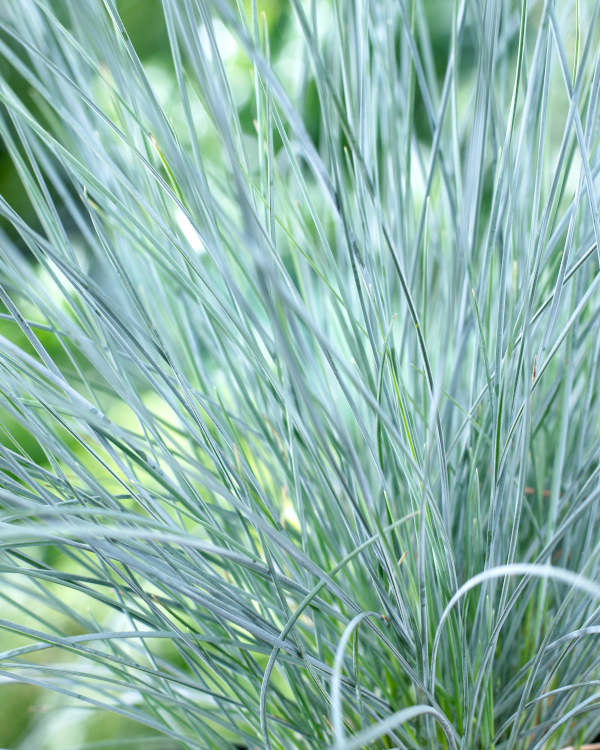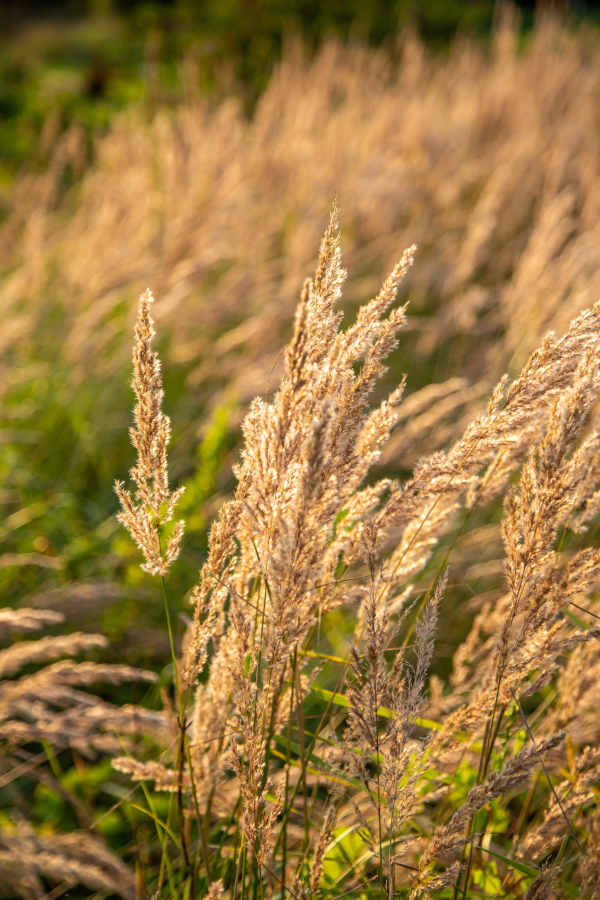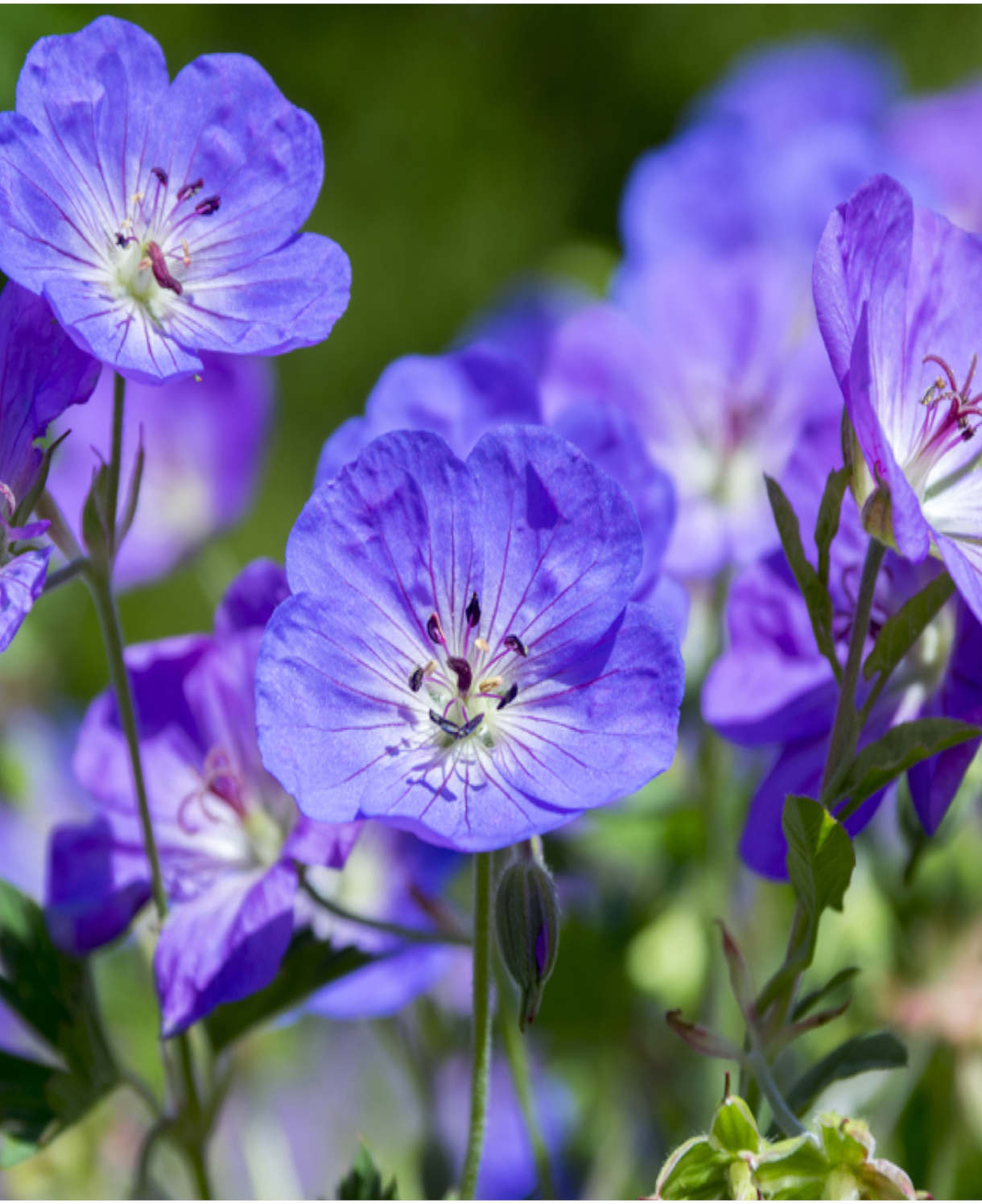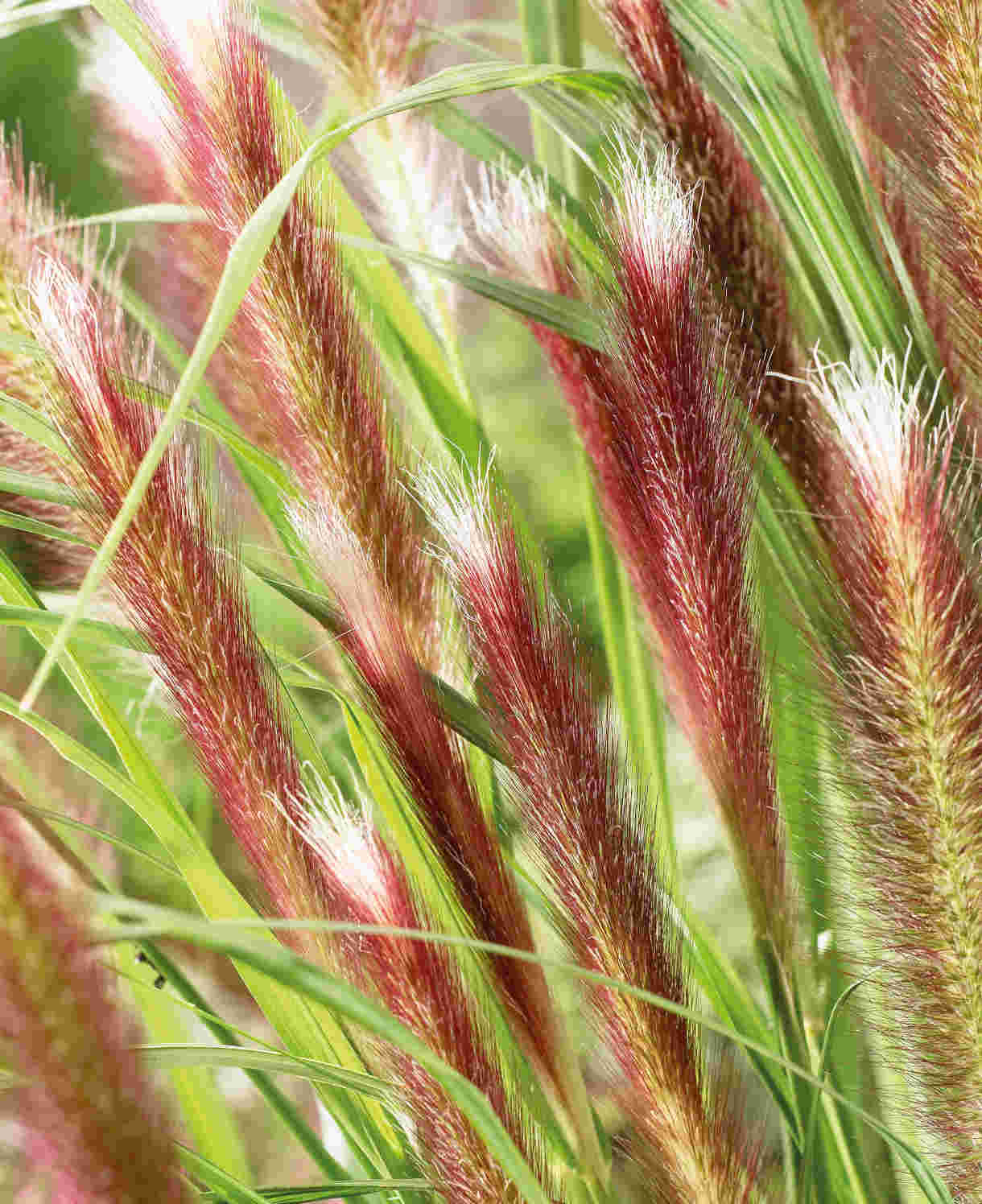How to grow Festuca
Festuca is the botanical name of a variety of grasses more commonly referred to as Fescues. They are low-growing, compact, mounding-forming plants with frothy looking green, blue or golden leaves which produce thin, upright stems of small flower spikes in summertime which can give the impression of a haze of flowers which look particularly attractive with light shining through them early or late in the day.
Thought to originate from Europe these grasses are now found in the northern United States and Canada where they thrive and spread readily creating large swathes of grassland. Festucas are an attractive and easy-going way to edge a border or pathway, and they mix well with other perennials as well as groups of ornamental grasses offering ‘on trend’ prairie style impact. Most are evergreen and useful in containers for winter interest at a sparse time of year. They also add animated interest as both the leaves and the flower stems will gently sway in the breeze offering transfixing beauty. All like a spot in full sun – which gives better leaf colour – yet will tolerate a degree of shade. Ensure the soil is free-draining and only moderately fertile to poor quality as damp, heavy or very fertile soil tends to shorten the life span of Festuca.

Zantedeschia is a genus of flowering plants from the family Araceae and is native to southern Africa. With a rich history dating back to the Ancient Romans, these deciduous or semi-evergreen perennials have been used as a symbol of celebration. Zantedeschia was Named after Professor Giovanni Zantedeschia, an Italian botanist.
There are two main forms of Zantedeschia: hardy and tender. Hardy forms of the plant can be grown outdoors, enjoy moist soil and full sun or partially shaded conditions - these are known as Arum lilies. Tender forms of Zantedeschia prefer being grown in containers or pots and should be brought inside over the winter - these are known as Calla lilies.
With tuberous flora in all colours from whites, yellows and oranges to deep reds and purples, Zantedeschias are not to be overlooked in any garden, as long as they have sufficient sunlight to grow in.
Ready to learn more about growing Zantedeschia? Read on for all there is to know...

Key Information
Soil pH
Position
Hardiness


Where & when to plant Festuca
Position- Full sun of any aspect
Soil- Happy in well-drained soil of any kind
Flowering Period- June to August
Hardiness- A hardy (H5), mound-forming grass
Ideal for gardens where temperatures are unlikely to drop below -10°C – which encompasses the majority of the UK. If you garden where this is not guaranteed you can still plant Festuca though they may be best in containers which can be brought indoors when weather becomes exceptionally cold. It is important to plant Festuca at a time when they are most likely to settle in well – this is autumn as it comes from a cool climate. (As a rule of thumb, grasses from warmer climes are best planted in late spring.) The next thing to bear in mind is that Festuca like an open, sunny position which benefits from light, moist yet freely draining soil which is moderately fertile. As said, plants will also thrive in containers; just make sure you choose one of a suitable size for your plant! Also ensure your container has drainage holes in the bottom so your Festuca does not become waterlogged.
How to plant Festuca
For planting in containers, first choose an appropriately sized pot and ensure that you do not swamp your plant by choosing too large a container.
- If you are using a large or heavy pot, it can be a good idea to fill and plant it in situ to save yourself the trouble of moving once full.
- Use a good quality free draining compost, and, if not already present in the compost (check the description on the bag) some suitable slow-release fertiliser granules.
- Start by partially filling the pot with compost; enough so that when placed on it the upper surface of the root ball is about 3cm lower than the top of the pot.
- Infill all the space surrounding the root ball with compost, firming down with your fingers then adding a little more so the plant is held tight.
- Pick up the container and lightly tap on the potting bench or ground a few times to help further settle the compost around the plant.
- Water well to both settle the soil and give the plant a good drink.
- A mulch with horticultural grit will look attractive and help to prevent a ‘cap’ or crust forming on the top of the compost (something container plants can suffer due to the artificial nature of their watering).
For planting in the garden, ensure you choose a spot with appropriate levels of sun
- dig the soil area removing any large stones and weeds and breaking up any lumps. Mix some organic matter into the soil. If your soil is heavy clay, now is also the time to add a generous helping of horticultural grit to adjust the drainage accordingly.
- Rake level and firm with your heels. Rake level again.
- Water plants well and allow to drain before planting. A good tip is to dig a hole twice the size of the root-ball.
- Place the plant in the hole, ensuring the top of the root ball sits level with the surface of the soil. Too low and the plant may rot, too high and the roots can dry out.
- Backfill with soil and firm in gently with your foot.
- Soak well with water to settle the surrounding ground.

What to plant with Festuca
These grasses are beautiful in their own right and ideal for locating anywhere in the garden which offers the necessary protection and allows you to make the most of the beautiful foliage and flowers. They combine well with other grasses and perfectly compliment hot colours in prairie garden as well as cooler colours in containers or a sunny border.



How to care for Festuca
Pruning
Evergreen grasses need very different care to deciduous ones. Both should be left in place over winter with the wind damaged old growth of deciduous varieties best cut off close to the ground in early spring before the new growth starts to shoot. Evergreen varieties can also be neatened up in spring with any dead or damaged foliage best removed by combing through the fronds with your fingers, leaving only the healthy growth behind.
Watering
Water your new plant regularly for at least the first two years. Once established, it should cope well without extra watering, except in particularly hot, dry spells. Bear in mind these plants are drought tolerant once they have established a good root structure and dislike being waterlogged.
Feeding
Once established in the ground a single application of fertiliser each spring should be sufficient. Plants grown in containers need a little more attention as they do not have such ready access to nutrients – feed with a general purpose liquid fertiliser through the growing season which is March to October.
Pests and Diseases
Festuca generally suffer from few problems if planted in an appropriate position. However, they may occasionally have difficulties with:
Rust: a fungal disease which appears as rusty-coloured patches on the leaves. It can be largely avoided by dividing overcrowded clumps and allowing better air circulation around plants.
Lack of flowers: usually caused by insufficient light. Resolve by reducing the shade from neighbouring shrubs or move the grass to a more open position. Overfeeding can also promote leaves at the expense of flowers
Rabbits and voles will sometimes eat these grasses though your plant should recover if not eaten in its entirety.
How to propagate Festuca
This can be done by sowing from seed or by division.
Sowing from seed:
- Cut well-developed flowerheads just before the seeds are fully ripe.
- Put the whole seeedhead in a large paper bag, bring indoors and allow the seeds to ripen naturally.
- Sow the seeds in autumn at a temperature of 10°C or store them cool and dry over winter and sow in spring.
Propagating by division:
- The best time for this task is late winter or early spring just as plants are beginning to resprout after a dormant period during colder weather.
- Simply dig up and lift a large clump and divide it into several smaller sections.
- Replant these smaller sections either into pots for transplanting once established or directly into open ground.
- Water well and ensure soil remains moist whilst these divisions establish themselves
*Many plants carry Plant Breeders Rights and cannot be propagated for commercial purposes.
Common Festuca questions
What is the best compost for growing Festuca in post?
A loam-based compost is best. Mix it 4:1 with a loam-free multipurpose compost to ensure the soil is suitably light for your Festuca.
How long will my Festuca last?
These are short lived grasses, lasting 3-5 years, yet are easily propagated for replenished supplies.
Which areas of the garden suit Festuca best?
An easy-going grass which is perfect for
Cottage and informal gardens
Gravel and rockery gardens
City and courtyard gardens
Patio and container plants
Banks and slopes
Prairie gardens





